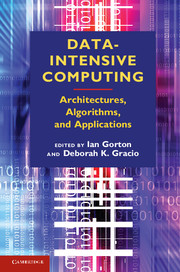Refine search
Actions for selected content:
1835 results in Knowledge Management, Databases and Data Mining
13 - Measurement Errors
-
- Book:
- Regression Analysis of Count Data
- Published online:
- 05 July 2014
- Print publication:
- 27 May 2013, pp 468-500
-
- Chapter
- Export citation
Preface to the First Edition
-
- Book:
- Regression Analysis of Count Data
- Published online:
- 05 July 2014
- Print publication:
- 27 May 2013, pp xxv-xxviii
-
- Chapter
- Export citation
4 - Generalized Count Regression
-
- Book:
- Regression Analysis of Count Data
- Published online:
- 05 July 2014
- Print publication:
- 27 May 2013, pp 111-176
-
- Chapter
- Export citation
6 - Empirical Illustrations
-
- Book:
- Regression Analysis of Count Data
- Published online:
- 05 July 2014
- Print publication:
- 27 May 2013, pp 225-262
-
- Chapter
- Export citation
List of Tables
-
- Book:
- Regression Analysis of Count Data
- Published online:
- 05 July 2014
- Print publication:
- 27 May 2013, pp xvii-xx
-
- Chapter
- Export citation
10 - Endogenous Regressors and Selection
-
- Book:
- Regression Analysis of Count Data
- Published online:
- 05 July 2014
- Print publication:
- 27 May 2013, pp 385-412
-
- Chapter
- Export citation
A - Notation and Acronyms
-
- Book:
- Regression Analysis of Count Data
- Published online:
- 05 July 2014
- Print publication:
- 27 May 2013, pp 501-504
-
- Chapter
- Export citation
9 - Longitudinal Data
-
- Book:
- Regression Analysis of Count Data
- Published online:
- 05 July 2014
- Print publication:
- 27 May 2013, pp 341-384
-
- Chapter
- Export citation
B - Functions, Distributions, and Moments
-
- Book:
- Regression Analysis of Count Data
- Published online:
- 05 July 2014
- Print publication:
- 27 May 2013, pp 505-508
-
- Chapter
- Export citation
3 - Basic Count Regression
-
- Book:
- Regression Analysis of Count Data
- Published online:
- 05 July 2014
- Print publication:
- 27 May 2013, pp 69-110
-
- Chapter
- Export citation
12 - Bayesian Methods for Counts
-
- Book:
- Regression Analysis of Count Data
- Published online:
- 05 July 2014
- Print publication:
- 27 May 2013, pp 449-467
-
- Chapter
- Export citation
List of Figures
-
- Book:
- Regression Analysis of Count Data
- Published online:
- 05 July 2014
- Print publication:
- 27 May 2013, pp xv-xvi
-
- Chapter
- Export citation
2 - Model Specification and Estimation
-
- Book:
- Regression Analysis of Count Data
- Published online:
- 05 July 2014
- Print publication:
- 27 May 2013, pp 21-68
-
- Chapter
- Export citation
Contents
-
- Book:
- Regression Analysis of Count Data
- Published online:
- 05 July 2014
- Print publication:
- 27 May 2013, pp ix-xiv
-
- Chapter
- Export citation

Search User Interfaces
-
- Published online:
- 05 March 2013
- Print publication:
- 21 September 2009

Data-Intensive Computing
- Architectures, Algorithms, and Applications
-
- Published online:
- 05 December 2012
- Print publication:
- 29 October 2012
6 - Dimension Reduction for Streaming Data
-
-
- Book:
- Data-Intensive Computing
- Published online:
- 05 December 2012
- Print publication:
- 29 October 2012, pp 124-156
-
- Chapter
- Export citation
Index
-
- Book:
- Data-Intensive Computing
- Published online:
- 05 December 2012
- Print publication:
- 29 October 2012, pp 287-290
-
- Chapter
- Export citation
10 - Data-Intensive Visual Analysis for Cyber-Security
-
-
- Book:
- Data-Intensive Computing
- Published online:
- 05 December 2012
- Print publication:
- 29 October 2012, pp 258-286
-
- Chapter
- Export citation
7 - Binary Classification with Support Vector Machines
-
-
- Book:
- Data-Intensive Computing
- Published online:
- 05 December 2012
- Print publication:
- 29 October 2012, pp 157-179
-
- Chapter
- Export citation
